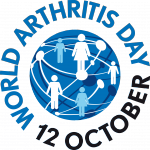Symptoms
Symptoms of systemic lupus erythematosus (SLE) can vary widely from person to person. Some people may only experience a few mild symptoms, whereas others may be more severely affected.
Even if you usually have mild symptoms, SLE can “flare up”, with symptoms becoming more severe or new symptoms developing.
The three main symptoms of SLE are:
fatigue (extreme tiredness)
joint pain and swelling
rashes – particularly on the face, wrists and hands
Fatigue
Fatigue is one of the most common symptoms of SLE. You may feel very tired even though you get plenty of sleep. Carrying out everyday tasks, such as housework or office work, can leave you feeling exhausted.
Many people with SLE find that fatigue is the most distressing and disruptive aspect of the condition because it has a negative impact on their work and social life.
Joint pain
If you have SLE, you’re likely to experience joint pain in your hands and feet. You may find the pain changes from one set of joints to another quite quickly, and is usually worse in the morning.
Unlike some other conditions that affect the joints, SLE is unlikely to cause your joints to become permanently damaged or deformed.
Rashes
Many people with SLE develop rashes on their skin – most commonly on the face, wrists and hands. A rash over the cheeks and the bridge of the nose is particularly common and is known as a “butterfly rash” or “malar rash”.
Rashes caused by SLE may get better after a few days or weeks, but can last longer or even be permanent.
Rashes caused by SLE can sometimes be itchy or painful. They may get worse if they are exposed to sunlight.
Other symptoms
SLE can also cause a wide range of other symptoms. However, you’re unlikely to have all of the symptoms listed below, and many people with the condition only experience the above main symptoms.
Other features of SLE may include:
a fever (high temperature)
swollen lymph glands (small glands found throughout your body, including in your neck, armpits and groin)
recurring mouth ulcers
hair loss (alopecia)
high blood pressure (hypertension)
dry eyes
memory loss
seizures (fits)
problems thinking clearly and difficulty telling the difference between reality and imagination (psychosis)
Raynaud’s phenomenon – a condition that limits the blood supply to your hands and feet when it is cold
ankle swelling and fluid retention (oedema)
When to seek medical advice
You should see your GP if you have persistent or troublesome symptoms that you think could be caused by SLE.
While it is likely that your symptoms are being caused by a more common condition, it’s important to see a doctor for a diagnosis.

